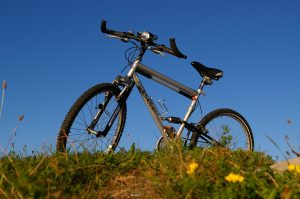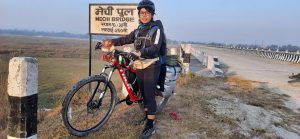
Beginners, let me first congratulate you for launching yourselves into the sport of mountain biking. Take my word for it, you will never regret it. The benefits of mountain biking are much more than you can imagine. It challenges both your body and the mind to keep you in good trim, physically and mentally. In short, it guarantees a new lease of life for you.
Obviously, riding is fun and come weekends you cannot wait to hit the trail on your new bike. How about maintaining your bike and keeping it in shape and best working condition so that it gives you optimum performance?
More than that, you would definitely wish to extend the life of your bike because it has cost you a pretty penny. Learning a few DIY basic maintenance tips can make a lot of difference and is worth the effort.
Here are some basic maintenance tips every mountain biker, especially the beginners, should follow to keep his/her bike in best possible working condition and shipshape. For more advanced repair, tuning, and servicing, there is always the experienced mechanic at a bike workshop to come to your rescue.
Clean your bike

Make it a habit of dusting and cleaning your bike after a ride to keep its components free from corrosion caused by grime and mud. Just one ride in a wet month and your sparkling new bike gets as dirty as it can, all caked with mud. It’s a dirty job and tedious too, tired as you are after a gruelling ride. Tired or not, you obviously do not want to spend a thousand rupees on a full servicing after every ride, do you?
Wet months
What your mud-ridden bike requires is a thorough wash and mopping. A mild liquid soap (dishwashing liquid) and a bucket or two of water will do the work. All you need is a toothbrush, a sponge, a used paintbrush, old but clean rags and obviously a little of your time and effort.
Work up the whole bike with the soapy water using the paintbrush and the toothbrush including, the frame, chainring, cassette, chain, derailleur (front and rear), pedals, brake pivots and the saddle.
Now comes the tricky part. Make sure you do not use a jet spray but can rinse the bike with a gentle spray nozzle or just with a mug and a bucket or two of water. The reason for not using a forceful jet-spray is to avoid water seeping into critical places like the suspension fork stanchions, the bottom-bracket shell and certain pivots inviting problems of rusting. It also helps if you remove the sea-post, wipe it clean and apply a little grease before replacing it.
Let the water drip off the bike and to shed the caught-up water, lift the bike and drop it to the floor; repeat it a couple of times. Wipe the entire bike with a clean dry rag. If there is the Sun, let it stand there for the drivetrain, chain, and cassette to dry up.
After the bike has completely dried off, lubricate the chain and other moving parts with a good-quality lubricant like a Finish line dry or wet (available in all leading bike stores). Use the dry lubricant for drier months and the wet for wetter months. Caution: never make the mistake of using motor oil (mobil oil).
The proper lubrication of the drivetrain is to apply the oil on the inside of the chain. Use the oil liberally covering each link by reverse pedalling with one of your hands; wipe off the excess with a rag. Do not overlubricate it since it will only attract more dirt and interfere with gear shifting. You do not need to lubricate the upper side of the chain as the chain-ring, cassette cogs and the pulleys run on the inner side.
Washing your bike after a wet ride is good but frequent contact with water can be detrimental to certain critical parts like the hubs and the bottom bracket. If your rides are almost like every other day during the wet months, you do not need to wash your bike after every ride, make it alternate days, when you are not riding. Caution: Like I mentioned earlier, never ever use a pressure washer or a powerful hose on your bike. It’s a total no-no!
Drier months

Generally, it’s better if your bike remains possibly in less contact with water. In drier months, you do not need to wash your bike frequently, even if the bottom-bracket shell and the underside of the lower tube collect mud.
What I normally do is get a rag soaked in water and wipe off the mud. Wash the mud off the rag and go for the final clean wipe. For the rest of the bike, a clean wet rag will do the work.
After a thorough wipe of the bike, prepare for the clean-up of the drivetrain, the chain, and the cassette. I clean them after almost like every two rides. If you regularly clean them, your bike will perform better and you will extend the life of those moving parts.
Ok, guys, ready yourself to dirty your hands because this work requires you to touch sooty black greasy parts. First, heave your bike, flip it upside down and let it rest on its saddle and the handlebar on the ground. Make sure it rests on some kind of a mat to avoid damaging the saddle’s Rexine cover and from scratching the paintwork on the handlebar.
You might wish to have a bike work stand for better ease of working, the kind you see in a workshop. That, however, costs a packet, something like Rs 10/12k minimum.
Now begins the hard work. Ready some used toothbrushes and a number of rags for the cleaning. Start with the roller chain. Bear in mind: never lubricate a dirty chain since it lets grit and abrasive substances into the rollers.
First, hold a rag around the chain and run it by revolving the crank both clockwise and vice versa. After you wipe off the grime, use a toothbrush on each gap of the chain links rigorously. Again, give the chain a final wipe with a clean rag.

Next, work up the cassette cogs and the chainring. Run the teeth of the cassette and the chainring through the toothbrush. While cleaning your cassette, also run the brush on the pair of pulleys or jockey wheels attached to the rear derailleur. Finally, lubricate the bike parts thoroughly as mentioned above.
Hold on your horses, your bike is still not ready, so do not dash off to hit the trail. Let your bike stand for at least 15 minutes after you flip it back upright so that the oil in the hydraulic brakes settles back. Give a vigorous pump to the brake levers to check both the front and rear brakes are working fine. Now, it’s a green light for you.
Ride safe, always wear a helmet and keep the rubber side down!
























